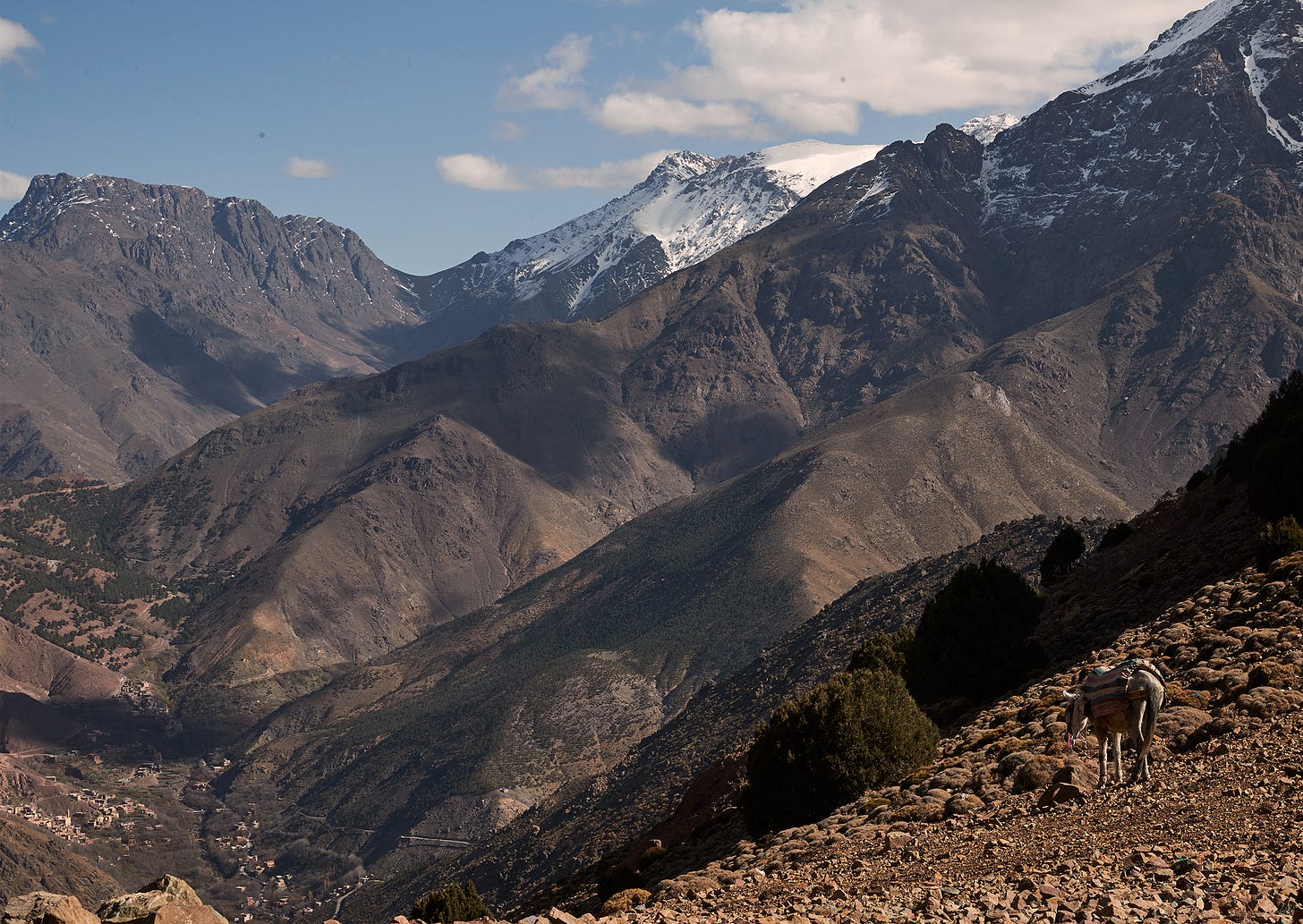This week began in Stockholm and ended in the Atlas Mountains. The journey made me reflect on difference between the urban and the rural, the city and the countryside. In Stockholm, I had lunch at Sturehof and drinks at PA & Co, saw the Olle Baertling art exhibition at CF Hill and had dinner at my favourite ramen restaurant. My friends and I talked about things that were happening in the lifestyle industries and gossiped about people we know. Geographically speaking, an urban life is convenient because everything – food, dry cleaning, friends, potential business partners – is in within easy reach (if you have the funds).
We left Sweden on the first day of winter, the aeroplane was two hours delayed because of all the snow. When we arrived in Marrakech, we quickly had to change out of our winterwear and into something more fitting. I’m writing this in a small lodge in the outskirts of a village that we walked to from our kasbah, several hours away. What’s most striking here is the silence – no people, no cars, no activities except to think and to talk with one another. We don’t have WIFI and instead we read books, drink tea and relax in the sun on the terrace.
In the 19th century, Paris was considered the most modern city in the world because of how it was remodelled to fit the new standards of contemporary life. It was transformed into a place for consumption and socialising; department stores replaced cathedrals and narrow alleys were turned into large boulevards. The urbanisation of the Western world reflected a parallel industrialization; and saw countless people leaving the countryside to reinvent themselves in Paris (as outlined in countless French novels from this time). The city was a place of fantasies and dreams, a symbol of the future where life was better than in the (rural) past.
150 years later, during the Covid-pandemic, when people could choose where they wanted to live, it was clear that the city no longer holds the same allure as it did back then. People left their city apartments and moved into their summer homes, or even bought a new place to live, far away from the big city stress. This is what I’m thinking about as I look out over the Atlas Mountains – the changing view of the big city, from a symbol of modernity to appearing slightly outdated.
In Stockholm, I had dinner with a friend who said he thinks the city is becoming culturally irrelevant. Twenty years ago, Stockholm was one of the trendiest capitals in the world, its designers regularly featured in Wallpaper* and similar magazines. Today, creative people can barely afford to live there and are instead moving to live in other places. According to my friend, we’re witnessing the opposite of gentrification; those who can, are leaving to live in less expensive, less urban places.
Based on what I hear from friends in other countries, this development is not unique to Sweden. Also in London, New York, and Paris creative people are leaving to find more dynamic places to live. Country-life may not be as comfortable, but it has other pleasures that the city cannot provide.
On the flight here, I read Gabor Maté’s When the Body Says No, the Cost of Hidden Stress. For some time, I’ve been thinking about Erving Goffman’s sociological theory of frontstage versus back-stage behaviour, how he stated that we perform in different ways in different situations. For example, waiters performing the job of a waiter while in the front part of the restaurant, but relaxing and behaving differently in the kitchen, with their colleagues, when no customers can see them. Reading this book made me understand why I recently have begun resisting “performing” when in professional contexts, and why I nowadays strive to always act in an authentic way, not distinguishing between front- and backstage.
In the book, Maté challenges the dualist notion that mind and body are separate, and outlines how supressed emotions may manifest as physical illness. Specialized physicians know only their own field, oblivious to the larger context (as also pointed out by R Buckminster Fuller) which means that they only treat the symptom, not the cause. The research field of psychoneuroimmunology views body and mind as one – what happens in one directly affects the other. As Maté states: “When emotions are repressed, this inhibition disarms the body’s defences against illnesses.” The book is an inspiration to act and think more authentically, to be aware and aligned with our emotions.
Reading Maté reminded me of a book I read a few years ago, Brandon Bay’s The Journey, where a simple meditation exercise allows you to travel into the atomic level of your body. I also tried this once, an afternoon when I was alone in a hotel room at La Colombe d’Or, with quite surreal results. Not everyone is comfortable exploring their own bodily universe to that degree, but it’s a rather mind-expanding experience.






